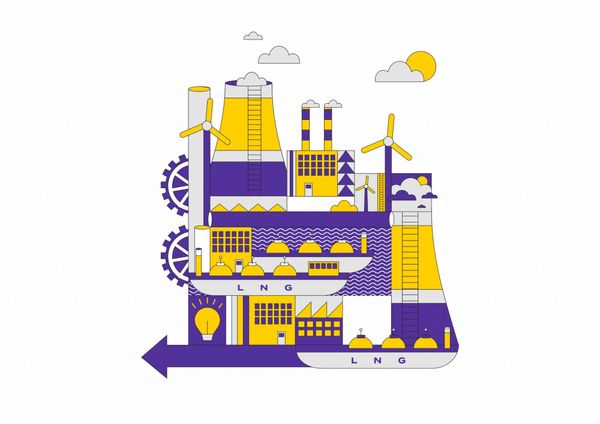Café, community- and workspace, gallery—this is the definition of Kastner Kommunity. The Budapest office of the Kastner advertising agency is actually not really an office, more like a space, almost a home. If you think this is just another coworking on the map of Budapest, you will be disappointed. But only in a positive sense.
The Budapest office is not the first (and probably not the last) unusual office in the history of the Kastner network: in Madrid, they operate a five-star barbershop, the Los Angeles branch features a veteran car salon, and the Swiss unit has its own chocolate brand. The Budapest team is building a community and, not least, bringing back the cool of advertising. How?
We asked architect István Bársony (Barsony Architecture Studio) and interior designer Gyöngyi Eichinger about the design process, while Andrea Tóth, creative director and managing director of Kastner Kommunity, and Judit Járadi, Kommunity’s project manager, told us about the mission of the agency and the spirit of the place. Interview!
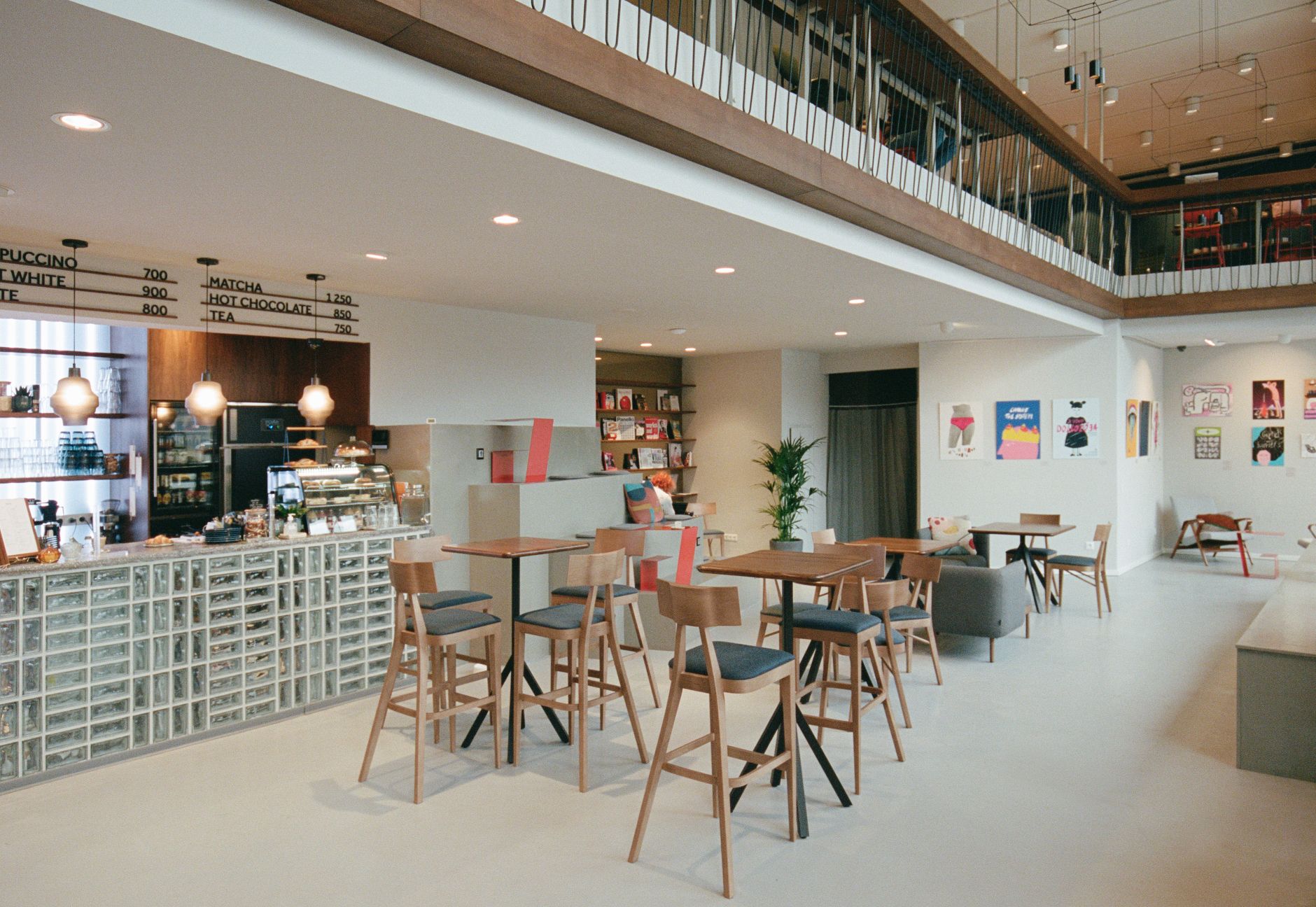

The ground floor of the tower house, which was opened in 1965, was also home to the Mézes Mackó (Honey Bear) from 1969. How does this space reflect the legendary espresso-confectionery?
István: The iconic tower block is an outstanding building, both physically and architecturally, and one of the most spectacular examples of the “brutalist” architecture of the 1960s. It was an explicit intent that the character of the building should prevail in the interiors of Kastner Kommunity.
Gyöngyi: The world of the 60s played a big role in the choice of colors, furniture and finishes. This is where the curved, metal-wand design of the gallery railing and the shapes of the furniture come from. The wire glass that originally appeared in the gallery (and which I love) was used in the stair railing, the office partition and as the backing for the drinks shelf. The regularity of the building’s façade is echoed, for example, in the glass-brick inlay of the bar counter or the wall cladding of the meeting room in the gallery.
The wooden surfaces, the blue color, the shape of the light fixtures hanging over the bar, and the bar tables’ position all evoke the former confectionery atmosphere.

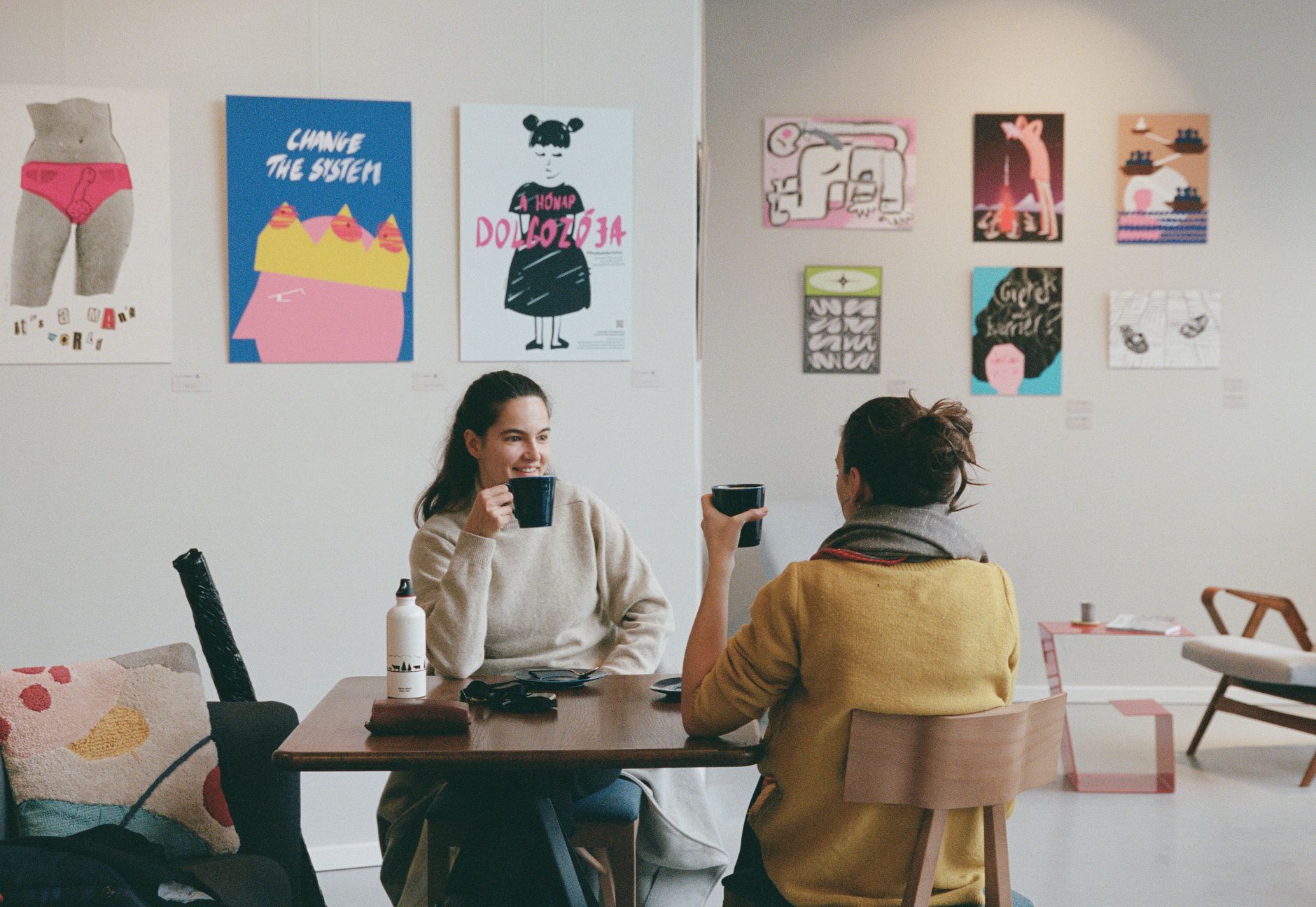
Kastner Kommunity is not just a community office; it is much more: a café, bistro, exhibition space, reading corner. How difficult was it for you to design spaces for so many functions?
István: Just as Kastner Kommunity’s identity has a kind of flow, we have also created spaces that interact with each other. The central element is the café, opposite the entrance. On the reception level, we designed flexible spaces, creating a showcase podium, a built-in stair-bench and a library corner, and a space-section for exhibitions has also been completed.
The distinctive staircase floating in front of the storefront connects the gallery to the ground floor both physically and visually. Under the stairs, we have also created a “separée” for phone calls. The open part of the gallery hosts the community office and the glazed meeting room. The railing-mounted desk is an attractive and spectacular place for extended work sessions since it also offers a view of the park as a permanent external backdrop to the interior spaces.

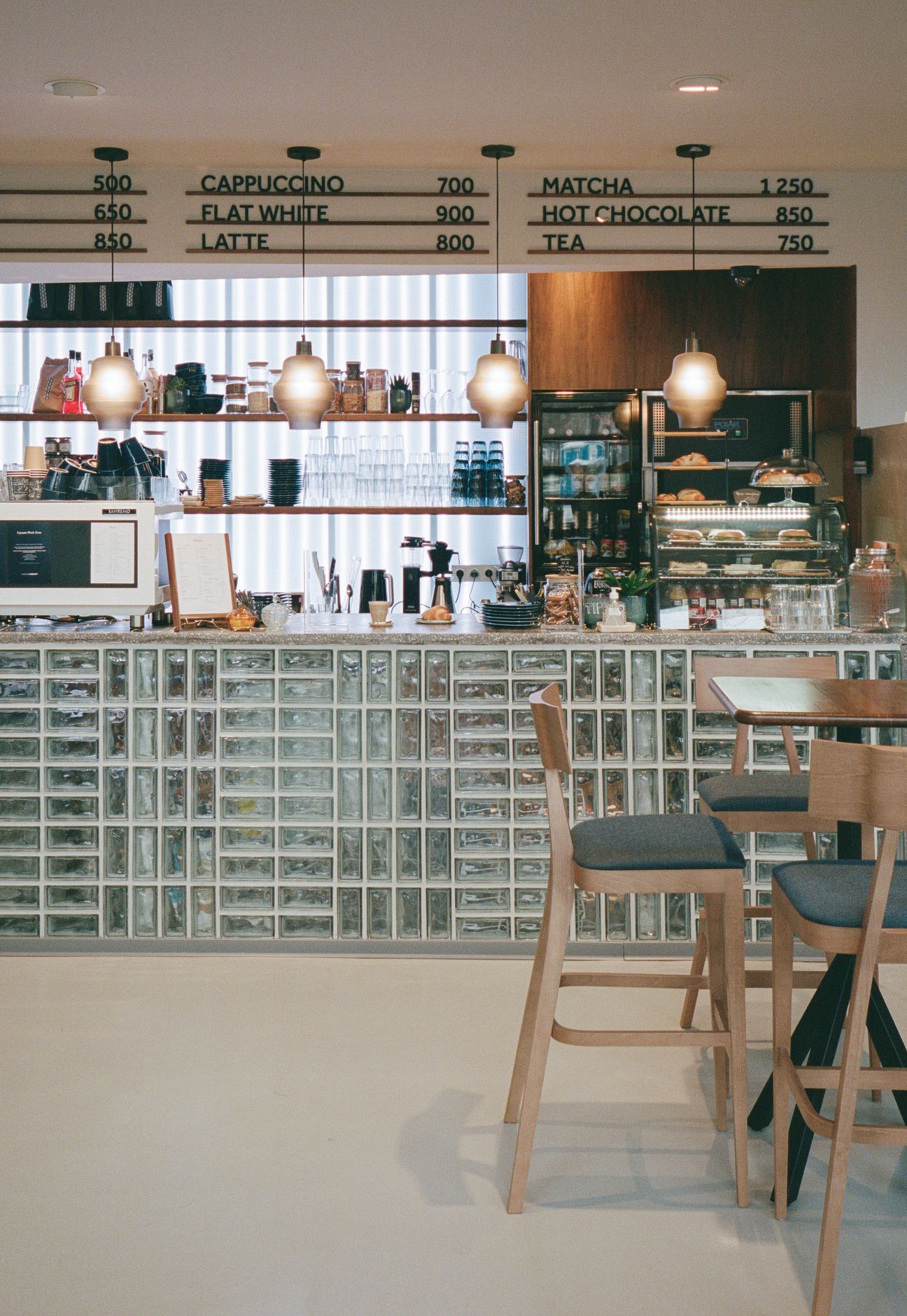
Gyöngyi: A complex function is always more challenging. Well-chosen furniture and unity of colors and finishes are essential. The upstairs Kastner office section was given a blue paint scheme in line with the identity color, which also appears on the carpets, with terracotta as a complementary color. All along, it was important not to compromise the view of the park; this is why we used open railing, for example. We also created a small island of plants on top of the windbreak to enhance this.
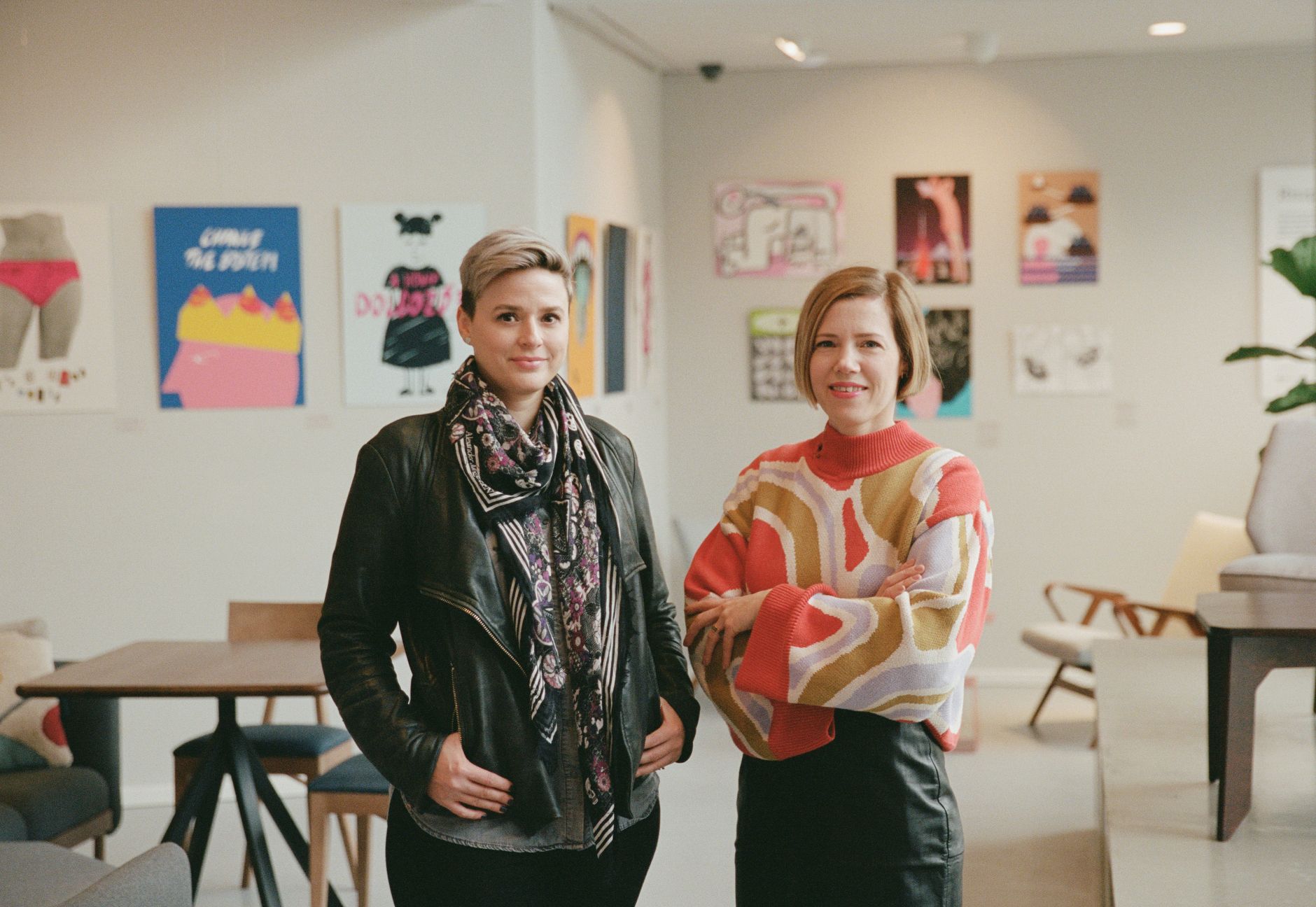
Andi and Judit, tell us about Kastner. The agency’s story started in Frankfurt in 1982: the office was founded by Johannes Kastner, a copywriter. How does it look like today?
Andi: Kastner is one of the rare agency networks where the owner is still the person who founded it. I think very few companies with such a long history can say that. Johannes Kastner, born in Austria, is an actual “rock and roll creative,” he worked a lot in Germany. The Budapest unit has always been close to his heart—partly because we are “brothers-in-law” – a known colloquialism used to describe Austrian-Hungarian neighbours – and partly because our flagship client, Red Bull’s iconic campaign cartoons, are still produced here in Hungary.
The Budapest office has just turned twenty. The company has gone through different phases of its life: we can now call ourselves a small to medium-sized agency. We are based in Budapest, but we work regionally, mainly for Red Bull, and we also have various project assignments from global and domestic clients.

There are several unusual offices throughout the Kastner network, each one different. What is the unique feature of the Budapest one?
Andi: Each of our offices has its own focus. Our London office is very strong in branding and design, Los Angeles is more involved in pop culture phenomena, Italy is all about empowering local SMEs and design businesses. Even though it’s a global network, local agencies have a lot of freedom in what they want to build out of that Kastner office—the management is an absolute partner in that. That is also what has made it possible for the place where we are sitting to be created in this way, in this form, thanks to the support of our network.
Two years ago, before the pandemic, I came up with the idea of what if we did something that didn’t take place on the top floor of an office building but opened the agency’s doors a little bit and went where life is happening. Our goal is to be welcoming, give young talent an opportunity, get to know each other, and build community.

You yourself prefer to call it a “place,” what can we find here in the Kommunity?
Judit: The idea was to find a new location for the agency but in a different way. If you look at the current space allocation, Kastner Kommunity is now 20% agency, 80% open creative space. It became apparent during the beta phase already that we really like it this way.
We have a reading corner next to the café, filled with professional books (some of which we also sell). It’s all there to inspire people who come to us, to meet each other: you read a good story, then you write a good headline, for example.
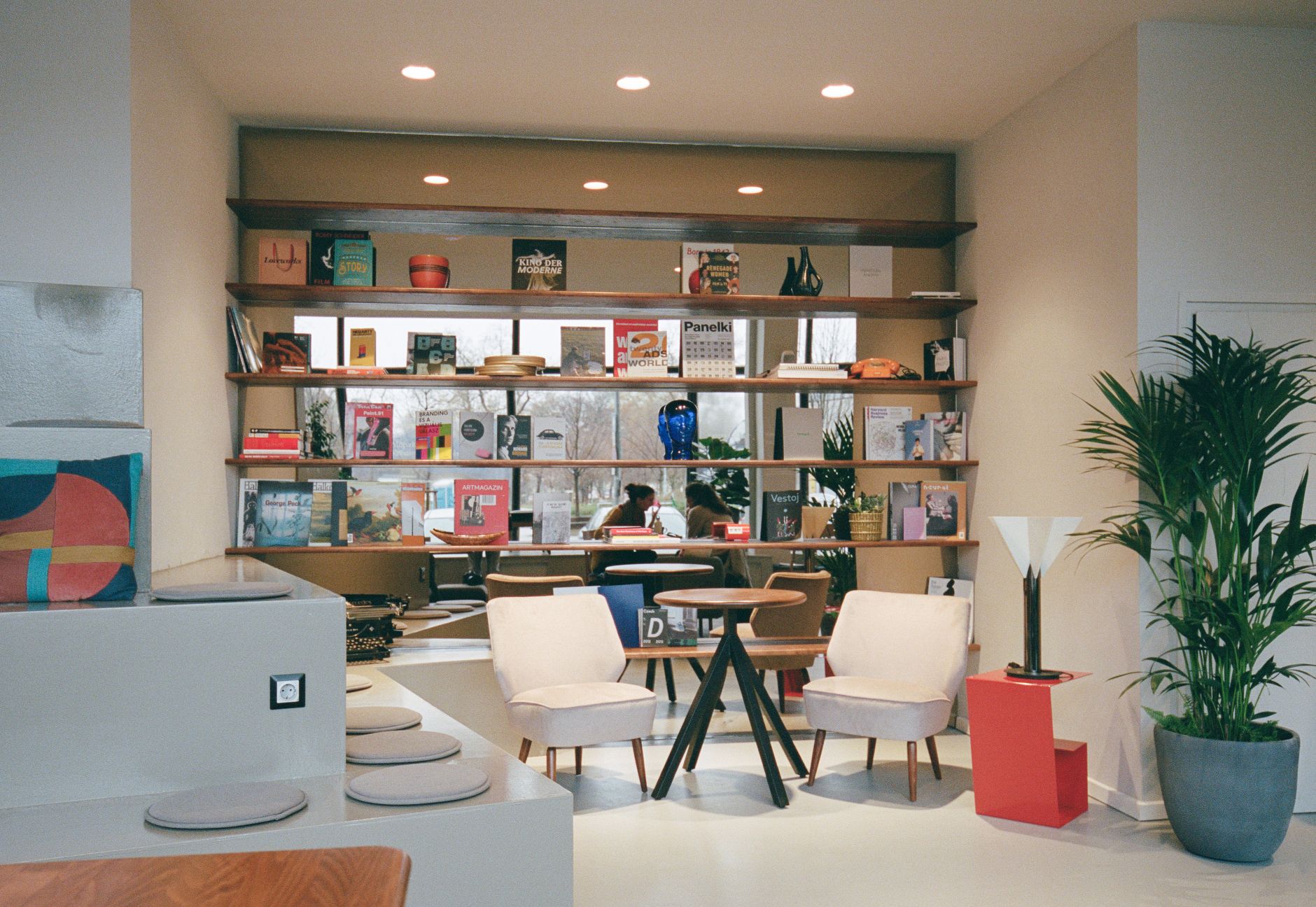
Another exciting feature is the mini gallery, named Art Korner—visible from the street front, it is also lit at night. We would like to invite artists from the industry who are bringing side projects and art-inspired materials (not only graphic works but also multimedia and spatial installations will be very much welcomed here).
The upper floor is more classic, but you won’t find the usual office feel here either: it’s a much more homely environment, thanks to the greenery. We also have two so-called silent corners for more in-depth work and a well-equipped meeting room for rent. Kastner’s private zone isn’t completely separated from the rest either—it’s a fluid space that adds dynamism to your day.
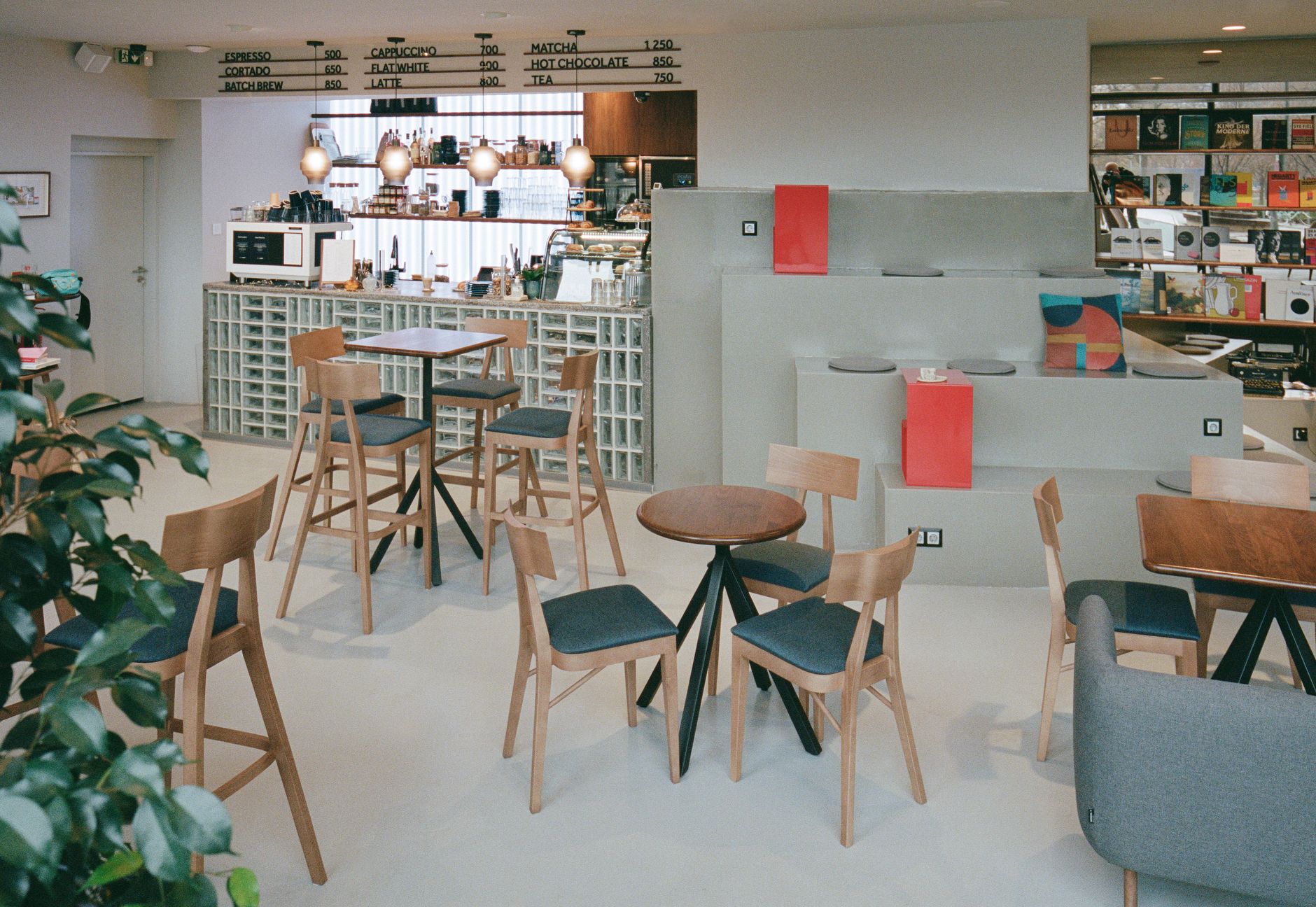
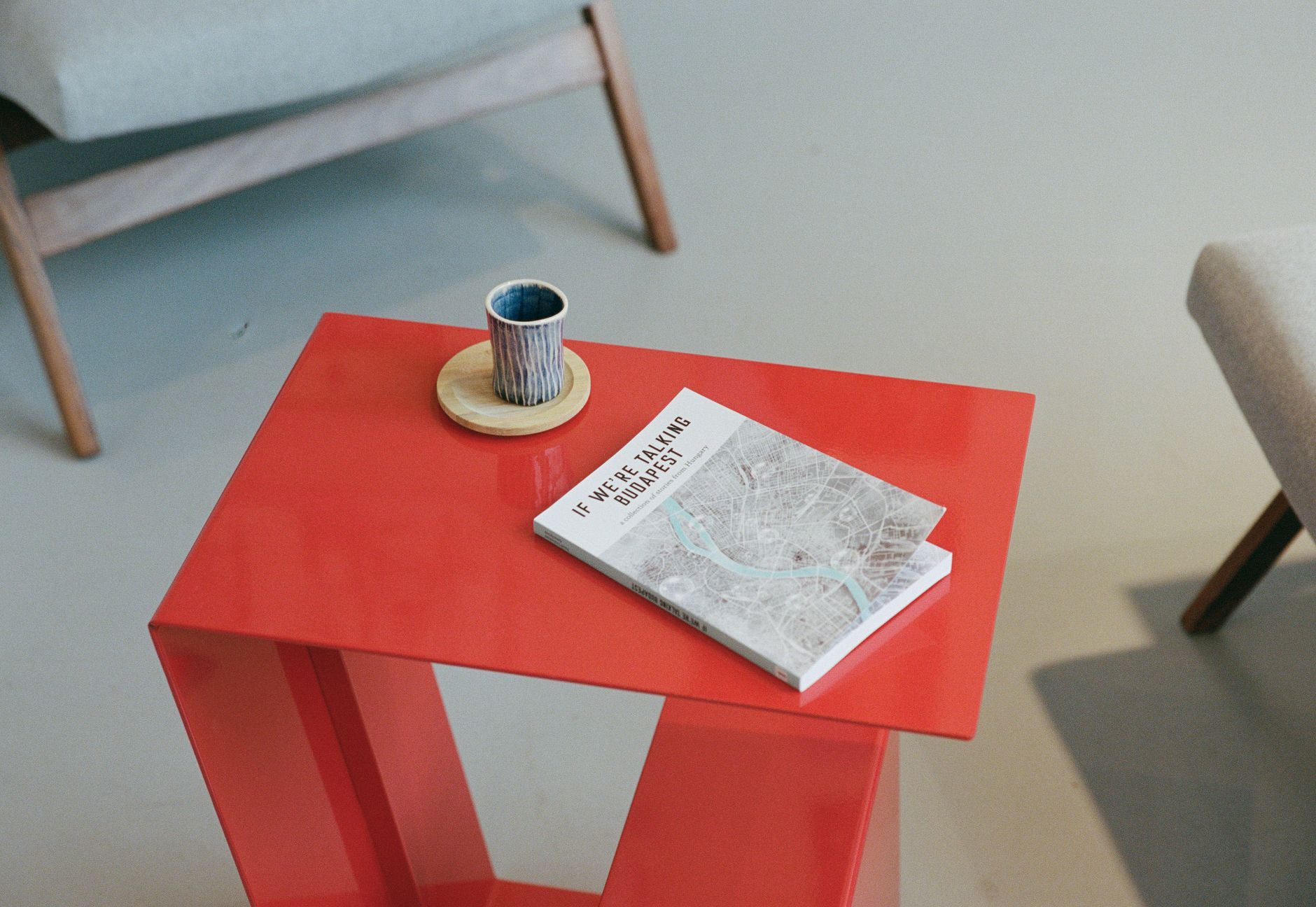
Surely the choice of name and location is no coincidence: how do you intend to create a community here, in the eighth district?
Andi: This was a big deliberate undertaking on our part. The agency has a rock and roll feeling, which comes from Mr Kastner himself. One of our creative directors even referred to him as “a punk in tweed.” And in fact, I think that’s also the agency’s credo: don’t take everything so seriously, but rather create things that people will get excited about. It was important that the place where we move has a story. We looked at many properties together with István and the group until finally, our global CEO encouraged us to be even bolder.
Personally, I love the 8th district; it has developed a lot in recent years: architecturally, it is a wonder and it is only recently that creative young people have really started to discover it. We went in the more exciting, more challenging direction—as communication professionals, that’s part of our job.
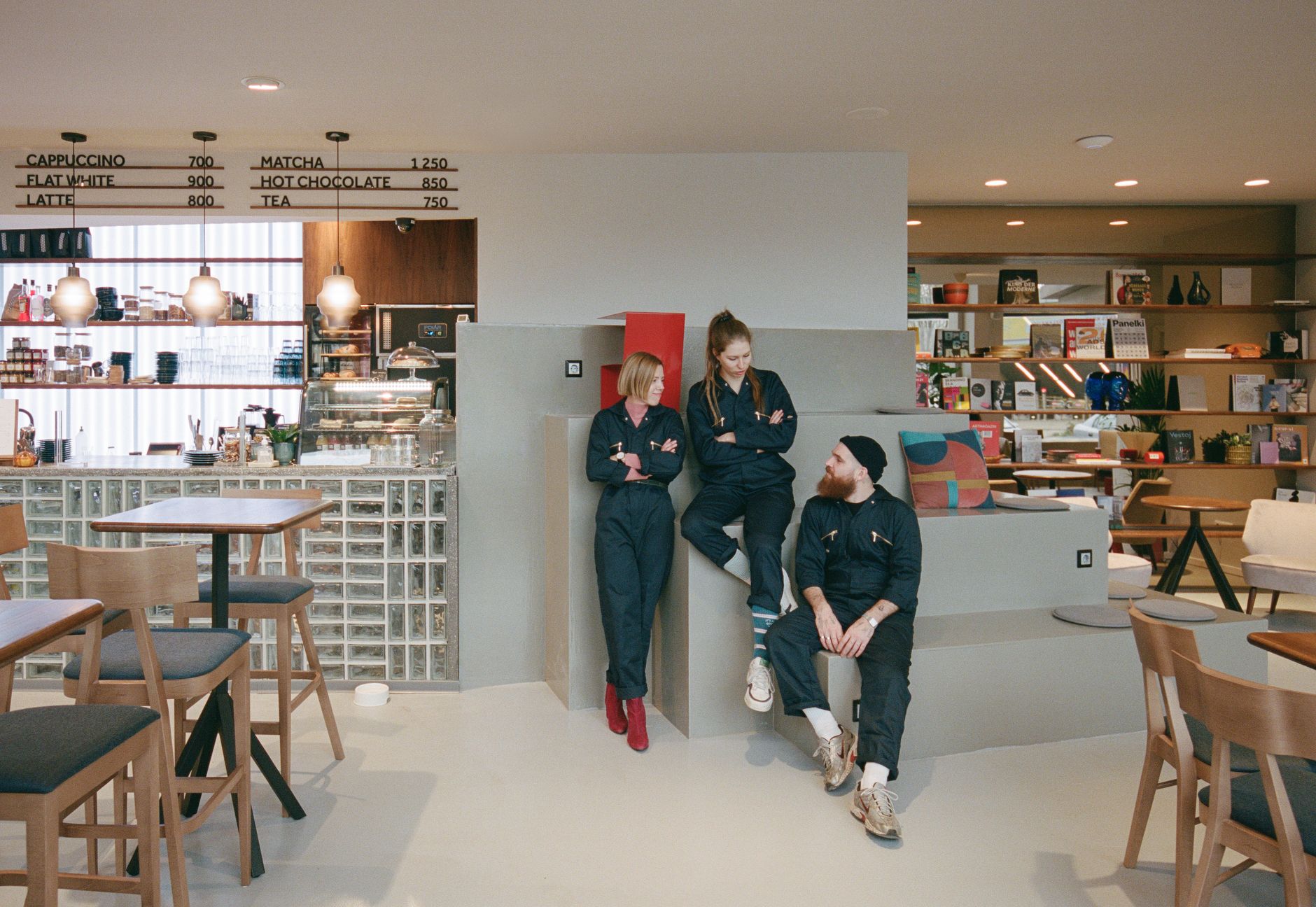
You have hosted exhibitions, workshops and round tables. What other events are planned?
Judit: We want Kommunity to be not only about the delicious coffee but also about the exciting connections that are happening here. We want to host programs that are not only about the advertising industry but also offer an inspiring look into film, literature, or the visual arts. The 2022 program will include both thematic and recurring elements, constantly reflecting on trends or introducing new ones where appropriate. For me, filling the venue with content is the most exciting part of community building.
Andi: In the spring, we are preparing for the grand opening, and we are also celebrating the twentieth birthday of Kastner Budapest.
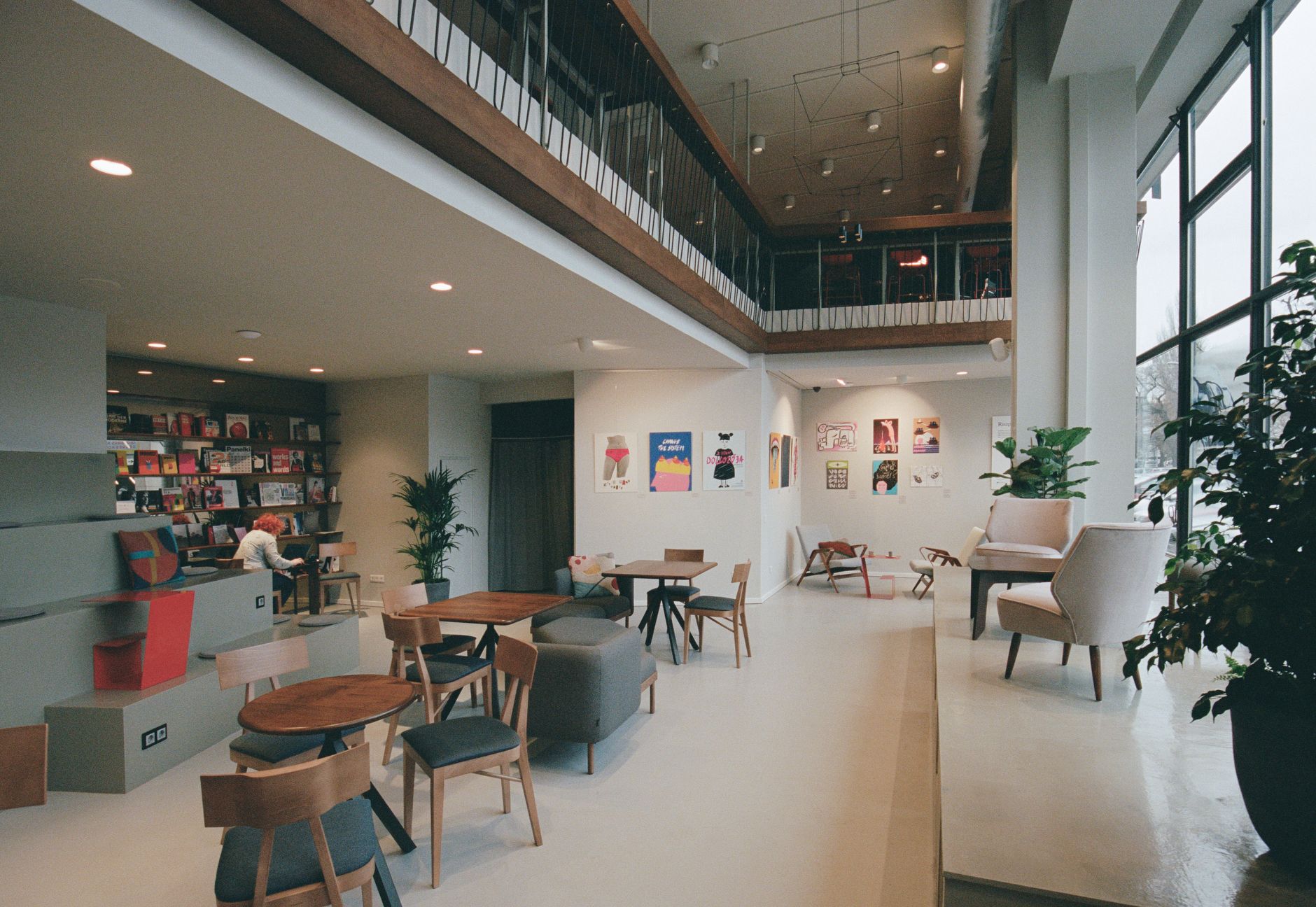
Architectural design: István Bársony, Erika Tóth (Barsony Architect Studio)
Interior design: Gyöngyi Eichinger
Lights: 3F Project, Solinfo
Furniture: Basic Collection, Fabrika, Möbelkunst
Joinery work: Nuut Workshop
Plants: Lelkes Kertész
Photos: Balázs Mohai
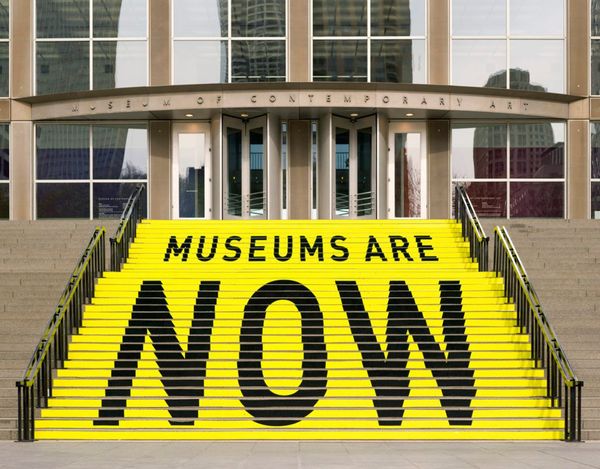
Three things Americans expect from museums
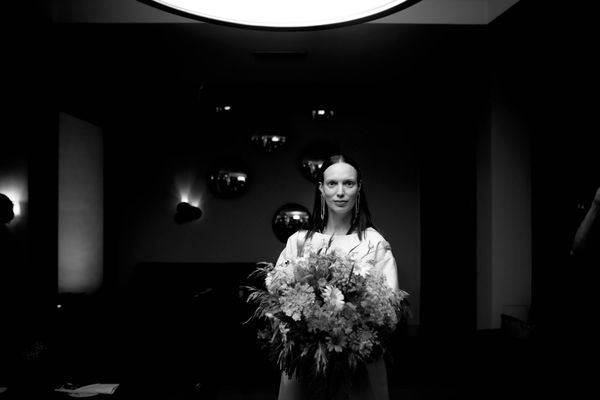
Society sees fashion as superfluous and superficial | Interview with Olo Krizova
